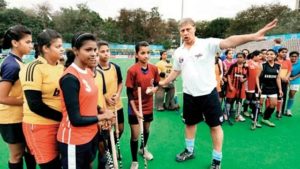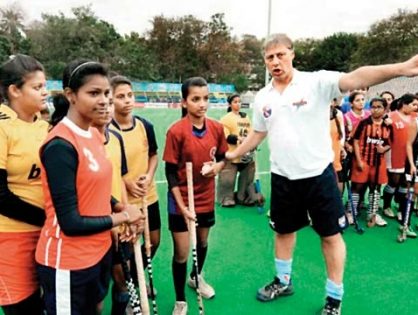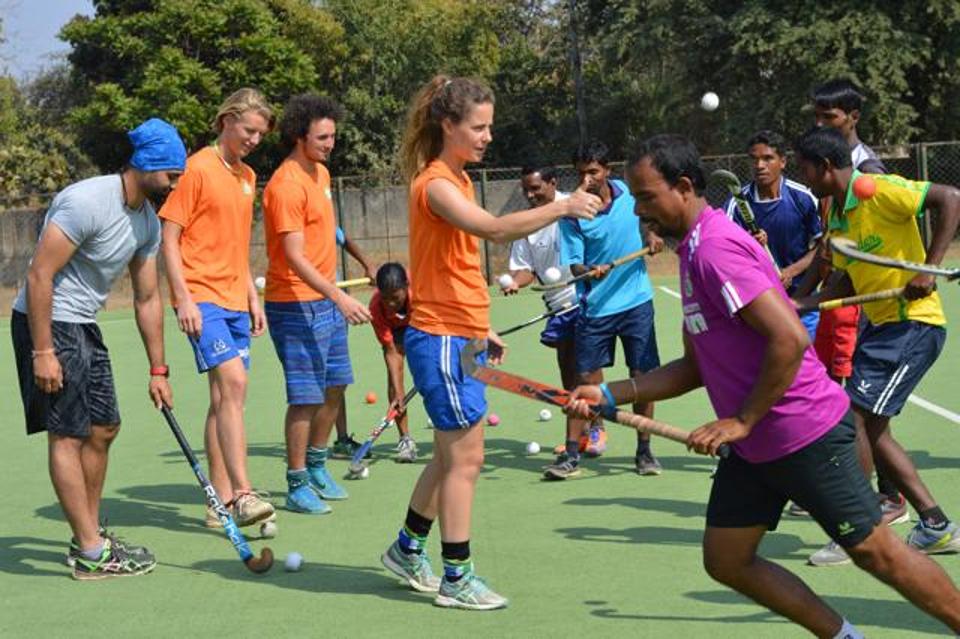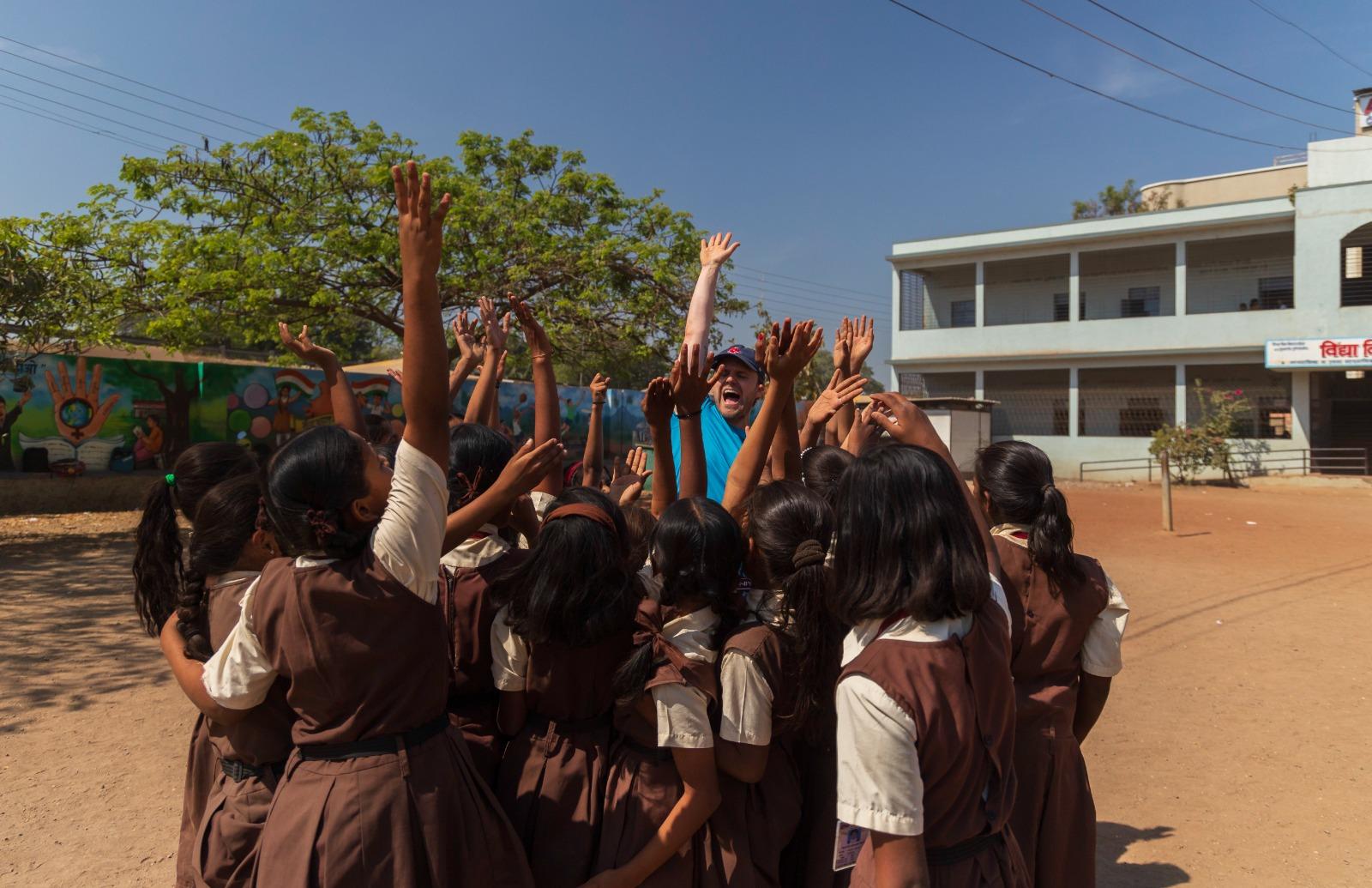Dutch hockey great Floris Bovelander tells Rutvick Mehta that with addition of solidity in defence to its unstructured & free-flowing hockey, India can be new standard of world hockey and can win medal at 2020 Tokyo Games. Excerpts from an exclusive interview

You’ve seen Indian hockey from close quarters over the past few years. How do you assess the growth of the men’s national team over the last couple of years? The team won a historic Champions Trophy silver but had a below par outing in the 2016 Rio Olympics…
I think India has developed. I was really impressed with what I saw from them at the Olympics. They were a bit unlucky. I was always told, ‘there is no luck in sport’. But I do believe India were unlucky at the Olympics. Almost every game, they conceded a goal in the final 10 seconds or so, which made them finish the league stage lower than what they should have.
Roelant (Oltmans) was in charge of the team at the Olympics. It’s not only Roelant, but the whole structure before Roelant that needs to be credited. There have been many other influences, like the Hockey India League. It all added to a better standard of hockey in India. I think India have developed more as a solid team. They used to have 20 very good minutes, or may 60 very good minutes, and then 10 equally bad minutes. Now they’re more solid, so they don’t have the bad minutes. And even if they do have the bad minutes, they can cope with it, as we’ve seen over the past year.
The good minutes taking over the bad was one trait that was key to the junior Indian team lifting the World Cup last year. To have youngsters who are champions must be a good sign for Indian hockey, isn’t it?
I was mighty impressed with the U-21 team that won the Junior World Cup (JWC). I saw a couple of their matches on television, I saw one live. It’s really great to see the passion and power of those Indian players. I really think that India can be the new standard of world hockey, and I’m not saying it just because I have projects here in India. The standard of hockey where you not only have a solid defence, as Roelant and some international coaches before have taught them, but you still have the Indian spirit.
It’s like the traffic here in India. It’s sometimes chaotic, there’s hardly any structure. But Indians do understand structure. So, when you have that structure-less hockey where you just go with the flow, and if you add a solid defence to that, you’re very good. I’m seeing that with the Indian teams now, and that is the biggest benefit of Indian hockey.
Talking of chaos, a lot of foreign coaches in India have been hired and fired in a jiffy in the past. But Oltmans has now been given a contract till the 2020 Games. Do you think him being in charge of the team for four years can prove to be the trick for Indian hockey?
Well, I don’t know. Maybe someone else can do better (laughs). But Roelant, I believe, has already done a really good job with Indian hockey. He managed to deal with all the influence in India, because things don’t work here in European style or the Australian style. India have had their problems, and Roelant managed to do all the political work and get everything done right. Now, if the players are still happy with him and his style of coaching, to have him for four more years is great.
I also feel that sometimes, a new coach can bring something different and fresh to a team. But having stability is the main thing in Indian hockey. Why Indian hockey has lost out, and also Pakistan hockey, is due to lack of stability. It was one of the main reasons why hockey was out of the picture for a long time in India. You need stability in program, you need stability in processing, you need stability in coaching, you need stability in players, not too much politics. Just focus on one team, one program, and then you can become a better team.
That program now seems to be centered around the youth, with Oltmans blooding in 11 boys of that JWC-winning team into the senior camp and leaving out a few big names that have been part of the senior squad for a long time. Is that a reflection of the hope of Indian hockey for the future, or the failure of its past?
I think it’s very good to have youngsters in the team. But to be honest, you always need your best players, even if they’re older. You need experience on the park. It doesn’t matter if you’re old or young, you need your most talented players playing for you every single time. I don’t think that some older players should leave just because they’re old. You go when it’s time for you to go, and you know it. That’s the rule in The Netherlands. It’s all about having the right spirit in the team, and that’s where the U-21 team stood out. They could play good hockey because of the good spirit in their team. Hopefully, they can bring this positive vibe into the senior team as well.
You said luck didn’t favour India in the 2016 Olympics. If it does, and with this fresh bunch of WC-winning juniors in the team, do you believe India can be a contender for a podium finish at the 2020 Games?
If you are the world champion U-21 team, in four years, a lot of the senior team players will be 25, in general. Thus, the same JWC-winning junior team can be on show four years from now, and that is really positive for Indian hockey. If they keep developing, I don’t see any reason why they cannot do well at the 2020 Games. In Roelant, I know that he will be working hard to make India the Olympic champions in 2020. I know the Germans had a program where they wanted to become Rio champions, I know the Australians had a program and as well as the Belgians and the English. So, India is not the only country that has a good program, and as the Rio Olympics showed, it’s not enough just to have a good program. Maybe Argentina will win again (laughs).
Look, the gap between the top countries and India is really small. You never know who’s actually at the top. You see the Olympics, nobody expected Argentina to be champions. But if India continue to keep developing with these U-21 players, they will be a team that can reach the podium. I don’t see one country that can surely claim to be at the top of world hockey right now. But India is definitely one of the teams we count on.
Let’s talk about your work in India now with Tata Hockey Academy in Jharkhand, which you have co-partnered. This initiative targets kids majorly in tribal areas. How important is it in hockey to identify talent as early as possible, and from pockets in the country where one wouldn’t generally venture?
It’s very important that children develop their skills. At the age of 8-12, you develop and fine-tune those hockey skills. So, if you have them at an early age, that’s very important. One other very important part in that is that if you’re good at hockey skills, we need to develop it as soon as possible on artificial pitches. Because playing on artificial pitches if different, and the sooner they play on artificial pitches, the better it is. Jharkhand has a couple of artificial pitches now where children can play. It’s no big deal if they play on grass or mud pitches, you can learn skills there as well. But there’s a certain moment between (age) 12 and 14 where you need to go into artificial pitches. If you want to have international level players, and you start playing them on artificial pitches from 17, 18, 19, it might be late. So, the earlier the better.
Is it something that you believe still ails Indian hockey: the process of identifying extraordinary talent at a really young age and taking care of them from then on?
The spotting of the talent is always there. But I believe there can be some more development there, because India is so big and you have loads of talented players across the country. I think Jharkhand is three times as big as The Netherlands. And we’re at the top of the world. So, Jharkhand can also be at the top of the world purely on the basis of numbers. Back in The Netherlands, we have about 1,000 artificial pitches. In Jharkhand, we have two now, or maybe three. So yes, if you want to increase hockey, you have to develop all that. It’s just that India is so big, you can develop hockey in so many areas. Of course, in the end, you’ll have only 16-18 players in the national team.
So to sum it up, I think that talent is spotted here, but quality of coaches all over India needs to be looked at. Hockey India has been doing a good job, but they cannot do it alone. I cannot do it alone, the SAI (Sports Authority of India) cannot do it alone. To have more players at the higher level, the coaching and infrastructure needs to develop more.
Source:Â http://www.dnaindia.com/sport/interview-india-s-hockey-is-like-its-traffic-floris-bovelander-2402455




